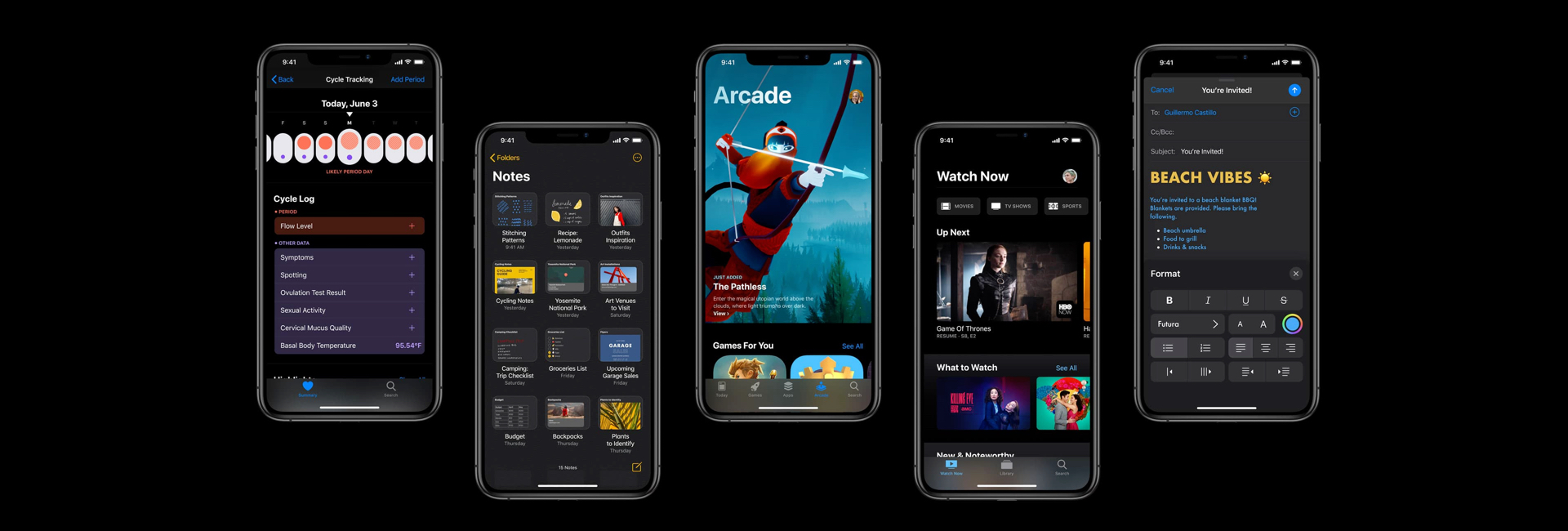Don't miss the chance to work with top 1% of developers.
Sign Up Now and Get FREE CTO-level Consultation.
Confused about your business model?
Request a FREE Business Plan.
A Comprehensive Guide to API for Mobile Application Development
Table of contents

API for Mobile Application Development. what’s that? Let’s dig in to find out.
So, you finally decided to build your mobile app.
Congratulations! You are on the right path.
But, what’s the fuss about APIs now? What is an API and how do they work? Are they necessary for your app?
A lot of entrepreneurs like you get confused with this question many times. And if you are new to mobile app development industry – there is nothing to worry about it. In this post, I have tried to include almost everything that you need to know about APIs and how they work.
So, dig in and help yourself make an informed decision before you start the development of your mobile app.
What Is An API?
APIs do a lot of work, in both – web as well as mobile applications. They’re the real soldiers that do the heavy lifting for us behind our lovable mobile apps. APIs help us conquer everything in a single tap – may it be ordering pizza in a hefty afternoon or booking a flight in urgency. APIs work in the background of mobile applications, providing us the convenience we expect and rely upon.
Here is the technical definition of an API:
An API is a bundle of instructions, requirements or standards that enables a software or application use database, services or features of another app or platform for providing better services.

In other words, it’s something that let applications communicate with other third-party platforms. For example, in Candy Crush, there is an option to connect and play the game with your Facebook friends. When you tap on “Connect Facebook” option, it doesn’t ask you to add your FB details. Instead, it gets the information from the Facebook server and let us enjoy the game – behind it, there is an API working.
For some apps, particularly for customer-oriented ones, APIs give the tools that empower client collaboration with information from different applications. For example, Uber utilizes a refined database of drivers, messaging, GPS information, and a number of other capabilities, all of which come from various sources – that is possible because of APIs.
How Do APIs Work?
To understand the entire working of APIs, let’s take a real-life example.
When you go to a restaurant, sit on a table and order something from the menu – you expect it to come to your table ASAP. Here, you are the user and the kitchen of the restaurant that will fulfill your order is a business – a mobile app.
Now, to give an order – neither you can go to the kitchen (obviously, you are the customer) nor the chef can come outside – as she might be preparing the order for other customers in the kitchen. To pass your order to the kitchen and to get your order back on your table – you will need someone.
That someone is a waiter – or the API (the connector).
The waiter takes the order, delivers it to the kitchen and guide the chef about what she needs to do. It then responds back and let you know how much time your order will take.
Also, if your waiter is an ideal one, your order won’t crash. Same is the case with API if it is designed and developed properly – you request will never crash.
APIs work like a doorway that allows only people with the right keys to enter. In case you want to give access to only a few people to your assets. The solution is an API. It acts as a doorway to your database and server through which you can provide access to limited users. A key could provide a user read access, write access or both.
Here is all about how an API works:

What Are the Different Types of Application Programming Interface?
There are four main types of API for Mobile Application Development:
- Open APIs: These type of APIs are also known as Public API, there are no limitations to access these kinds of APIs since they are publicly accessible.
- Partner APIs: You will need specific licenses or rights so as to access this kind of API since they are not accessible to the public.
- Internal APIs: Another name for these type of APIs are Private APIs, just internal teams can use this type of APIs, which is, as a result, less known and often created to use inside the organization. An organization uses this kind of API among its diverse internal teams to improve their services and products.
- Composite APIs: This sort of APIs combine various service and data APIs. It is a sequence of tasks that run synchronously because of the execution and not when the task requests. Its major function is to accelerate the procedure of execution and improve the performance of the members in the web interfaces.
Alongside these APIs, there are also Web APIs, for example, SOAP (Simple Object Access Protocol), RPC (Remote Procedure Call), and the most prominent one—REST (Representational State Transfer). There are over 15,000 public APIs available, and a number of private APIs that organizations use to improve their external and internal capabilities.
Also Read: Understanding What is a Chatbot & How Does it Work For Various Industries
What Are the Uses of APIs?
API technology is very versatile, and it can be utilized for a variety of purposes. Its number of uses bring another set of advantages that make APIs an ideal tool for businesses.
1. Building Apps that Need Other Software in Their Operation
If you need to make an application or execute a bit of code on your website that enables users to book appointments and add them to their schedule, an API can help streamline this request and decrease the working developer need to do to get it going.
2. Control Access to Certain Assets
APIs also act as doorways that only provide access to users that have the correct credentials. This can incorporate customers or employees that give the right username or password to get to the specific assets.
3. Help Devices and Apps Connect Seamlessly
One reason why APIs improve performance is that they give a standard way for programs to interact. Rather than accepting a boundless number of requests in various styles, APIs function as a universal plug for all requests to come in a single form.
Also Read: How to Improve the Search-ability of your Progressive Web Apps?
Why APIs Are a Boon for Developers?
As said earlier, APIs do all the heavy-lifting when it comes to operations. Let’s say you are planning to make an application for the iPhone. Apple’s iOS OS gives an enormous number of APIs for the same—just like every other framework does—to make this simpler for you.
For example, if you need to embed a web browser to show web pages, you don’t need to program your own web browser from scratch only for your application. You use the WKWebView API to install a WebKit browser object in your application.
If you want to catch pictures or videos from the iPhone’s camera, you don’t need to write your own camera interface. You can utilize the API for the camera to leverage the iPhone’s built-in camera in your own app.
If APIs were not there to make this simple, application developers would need to make their own camera software and interpret the hardware inputs of the camera.
But, Apple’s developers have already done this heavy-lifting so that you can just utilize the camera API to execute your tasks, and after that continue ahead with building your application. And, when Apple updates its camera API, all the applications that rely on it will get its benefits automatically.
This applies to every platform. Do you need to make a dialog box on Windows? There’s an API you can use for the same. Need to incorporate fingerprint authentication for Android? You can use APIs for that too. Therefore, mobile app developers don’t need to create the wheel again and again just because of APIs.
What Is API for Mobile Application Development?
When it comes to integrating an API into a mobile application, there are two ways in which you can do the same. You can either use a pre-built API or you can go for API Development i.e. developing an API from scratch for your app.
Using an already built API saves money, is normally faster, and requires less development experience than making an API from scratch. However, by making a new API from scratch, you have more opportunity to make it custom as per your needs. You can also guarantee its security.
However, if you decide to purchase an existing API, there are numerous sites that can enable you to do so. On the other hand, if you decide to make your own API, make sure to hire a mobile app development company that you trust so that the final API meets your desires and needs while you can at the same time guarantee its security. The choice is yours.
6 Must-Have Features to Consider While API Development
Most mobile apps and software these days have APIs, some of them to enable you to easily locate the best café in the town, some of them to sustain the organization’s logistics software with the latest data about the present location of merchandise. APIs are generally utilized in both – B2C and B2B situations. While a couple of APIs make fetching a breeze or data integration possible, others turn it into a nightmare for integration developers.
But, what are the features that make an API a good one? Let’s have a look:
1. Searching
A good API should let you search for data by specific criteria, especially by date. Because after the first data synchronization, it is normally the changes that we are interested in. To put it simply, we require the changed (corrected, updated or deleted) or added data since the last time we set off the synchronization.
So, when a trigger should poll information from API, the very first question to answer is the means by which to detect the changes in the data. The only way to do this sorting is by refining the data since particular timestamp. That is the reason it is important for an API to provide timestamps.
2. Paging
Sometimes, it is possible that you get a huge amount of data, even if it is only the changed data. In order to manage it efficiently, we need an approach to determine that we need not all the changed data in one go, however, just the first “page” of it. For instance, of the size of 1000 data records.
This is why we use paging. A perfect API must be able to restrict the amount of data that can be received in one go, also the frequency of requests for data. It should also have the option to inform about what number of “pages” of the data is left.
3. Sorting:
To guarantee that the end client gets every one of the pages of data one after the other, the API should enable the clients to sort data according to the time of modification or using any other condition.
4. JSON Support/ REST:
Despite the fact that it is not necessary, it is a great idea to consider your API to be RESTful. The REST APIs are light-weighted, stateless and let you retry the upload mobile application process if that fails. The same is quite tough in case of SOAP. Additionally, JSON’s syntax is very similar to most of the programming languages, which make it simple for any application developed to parse it into some other language.
Utilizing REST with JSON is considered as a best practice, however. This is because JSON’s syntax is very similar to other programming languages, which makes it simple to parse it in any language. Also, JSON is additionally extremely simple to create.
5. Authorization via OAuth:
OAuth is the thing that makes a good API case, as well. It gives extensively better ease of use to the application developers as well as users than any other method.
6. Good documentation:
It looks like giving good, comprehensive documentation for an API is something that every developer should do, you don’t have to ask for that if you are getting your own API build from a proficient developer. However, there are a number of APIs that are poorly described, even those that are really good and helpful for integration.
To put it plainly, the processing time should be least, response time should be good and security level high. It is really very crucial to put efforts into the best practices for securing your app, as it deals with heaps of data.
APIs can take the proficiency of your mobile application to the top level by increasing ease of use and access to data. If your developers use a well-planned process for developing your API, you also can use the advantages that APIs offer in your mobile application.
So, that was all about APIs. Now that you know everything about APIs – What are APIs and what are the must-have features for building the same, are you interested in making or integrating an API in your app? We will be glad to help you. Contact us!

Rate this article!
(1 ratings, average: 4.00 out of 5)
Join 60,000+ Subscribers
Get the weekly updates on the newest brand stories, business models and technology right in your inbox.

Humane yet subtle, Naiya is a girl full of ideas about almost everything. After earning a bachelor’s degree in computer science and engineering, she decided to merge her technical knowledge with her passion for writing – to accomplish something interesting with the fusion. Her write-ups are usually based on technology, mobile apps, and mobile development platforms to help people utilize the mobile world in an efficient way. Besides writing, you can find her making dance videos on Bollywood songs in a corner.

Telemedicine 2.0 - A Comprehensive Guide On What Healthcare Providers Need To Know?
Discover how the latest advancements like Artificial Intelligence in telemedicine are reshaping patient care. This comprehensive resource offers insights into the key trends and innovations driving this shift, providing valuable knowledge for healthcare professionals looking to stay ahead.
Download Now!Subscribe to Unlock
Exclusive Business
Insights!
And we will send you a FREE eBook on Mastering Business Intelligence.


















